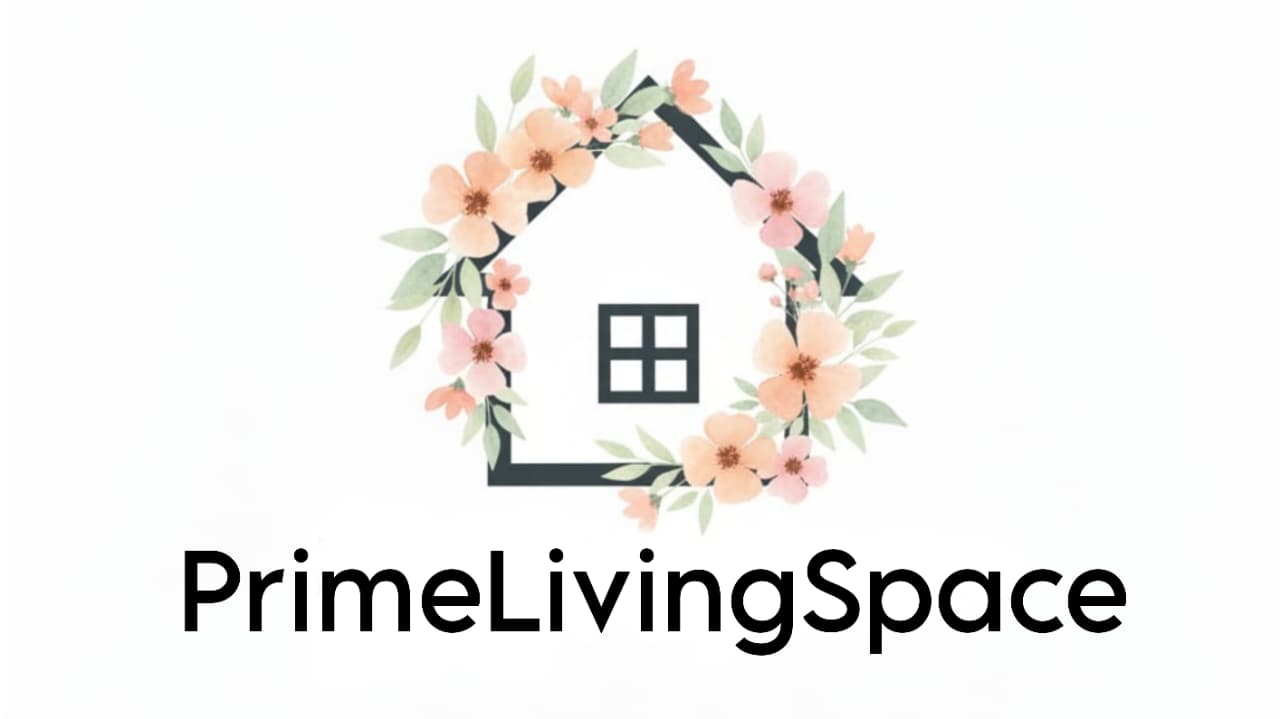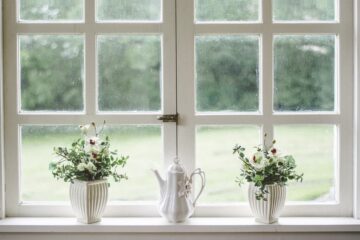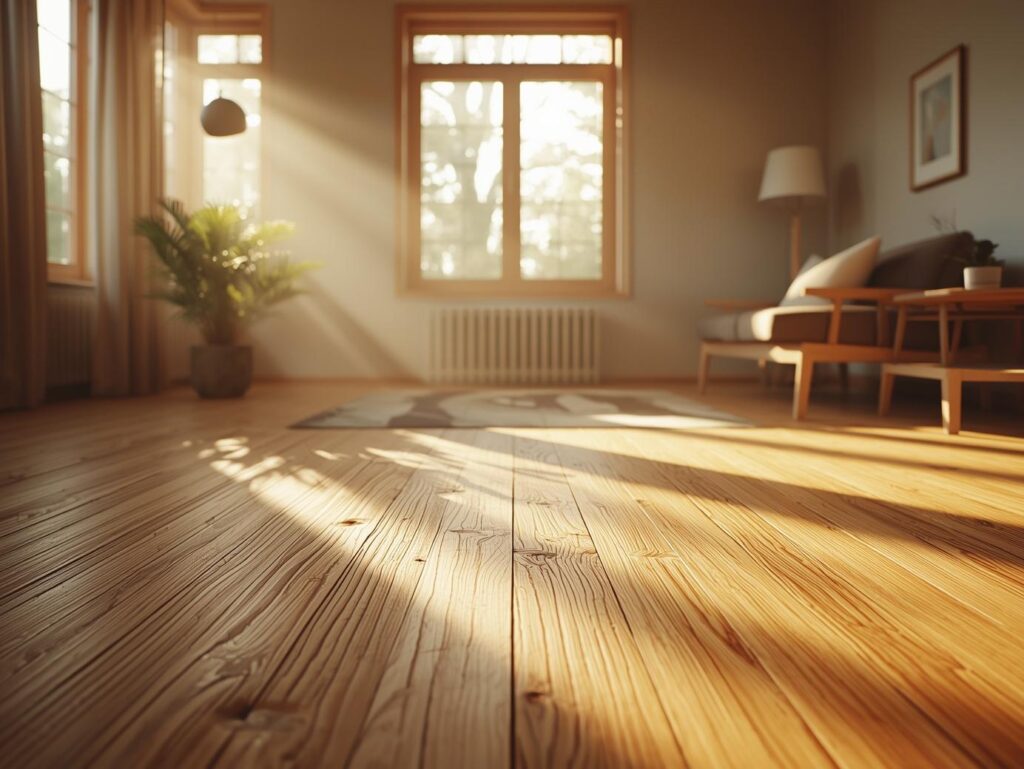
Floors and subfloors might not sound glamorous, but they’re the backbone of every beautiful, long-lasting home. Let’s dive into how to pair them perfectly—style, strength, and all.You walk into a room that just feels right, the kind where your footsteps sound solid, the air feels cozy, and everything flows. That’s not just design magic; it’s flooring harmony—the perfect match between what you walk on and what’s beneath it.
Most people only think about flooring the oak planks, the marble tiles, and the sleek vinyl. But here’s a truth that pros and designers know: your floor is only as good as its subfloor.
In this guide, we’ll break down how to pair flooring and subflooring like a pro using hands-on DIY checks, mood-based pairing ideas, and clever hacks that can save you hundreds in mistakes (and give you floors that feel incredible underfoot).
Step 1—Start with What You Have: A DIY Subfloor Discovery
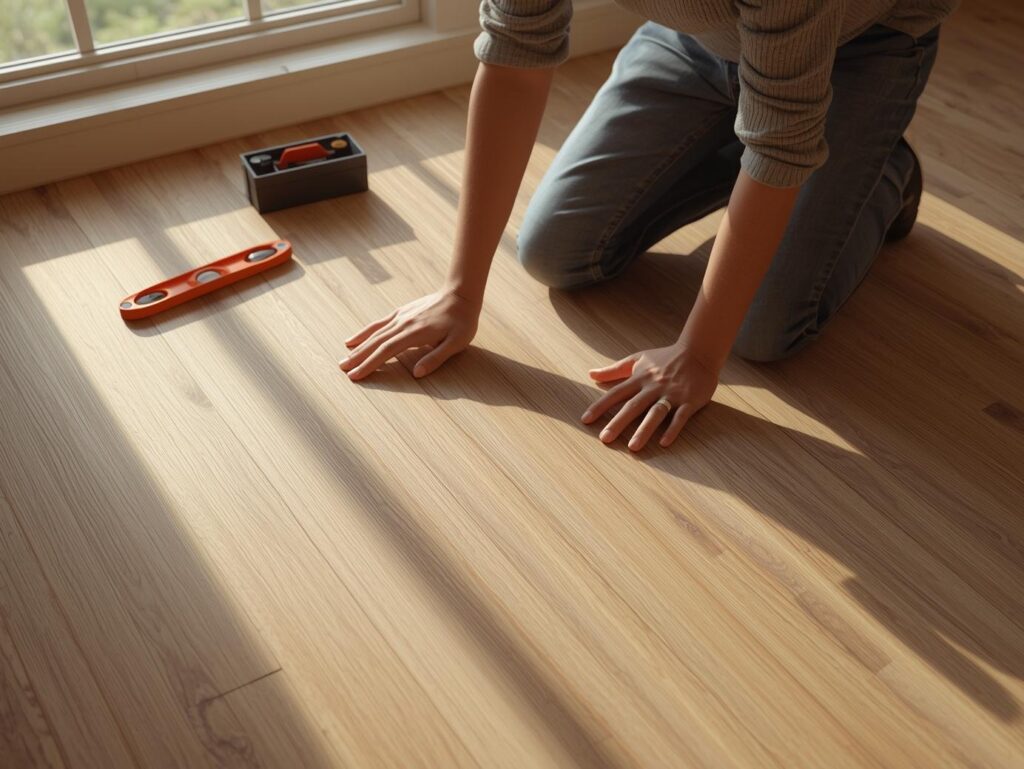
Before dreaming about new floors, take a moment to meet the one you already have: your subfloor. It’s the silent support beneath every board, tile, or plank.
Here’s a quick DIY check you can do right now:
- The Tap Test: Knock on different areas. A hollow sound? You’ve got gaps or loose spots.
- The Marble Trick: Roll a marble across the room. If it drifts, your subfloor isn’t level.
- The Squeak Check: Step gently across seams. That creak? It’s likely a loose nail or dry joint.
Try This:
Slide a credit card across your floor—if it catches or lifts, you’ve found unevenness. Mark those spots for leveling later.
Step 2—Match Mood to Material
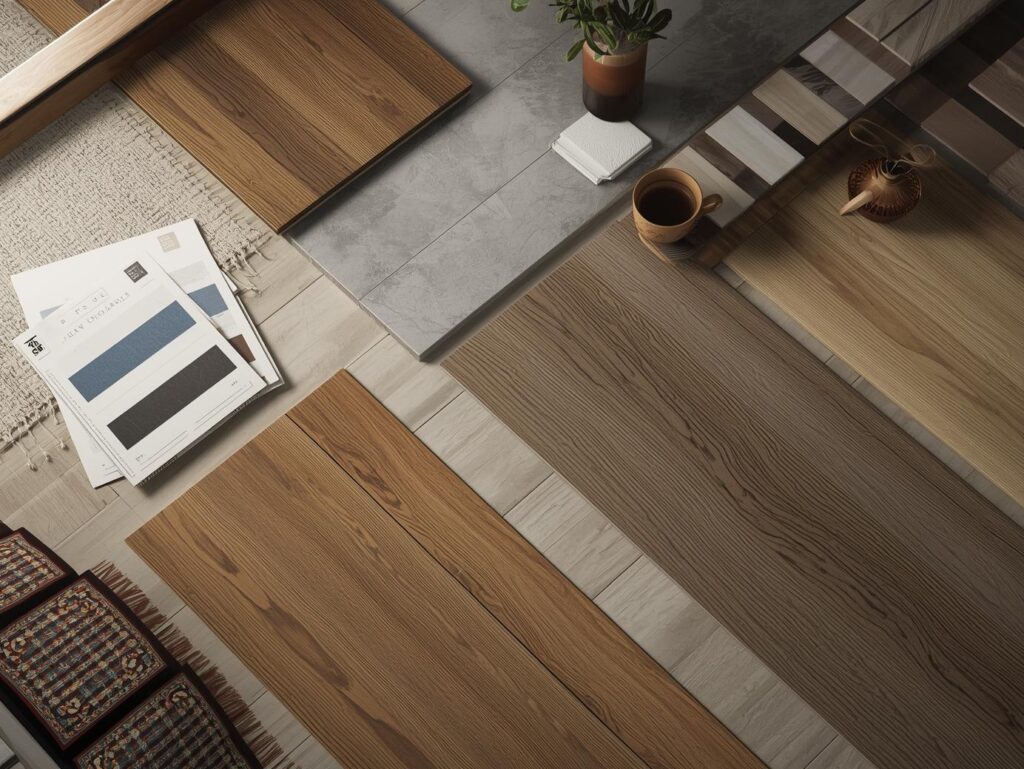
Think of your flooring and subflooring like a designer thinks about fabrics and linings. One sets the tone; the other gives structure. The goal is to make them complement each other, not fight for attention.
Here’s a simple cheat sheet:
| Mood | Best Floor Type | Ideal Subfloor | DIY Tip |
| Warm Rustic | Engineered Oak | Plywood | Sand edges and seal seams for that old-barn vibe. |
| Sleek Modern | LVT / Concrete | Self-leveled Concrete | Use a matte seal to keep that soft, luxe look. |
| Cozy Farmhouse | Laminate | Plywood or OSB | Hide seams with wood filler + paint in a soft tone. |
| Minimalist Loft | Exposed Concrete | Sealed Concrete | Layer rugs for warmth and texture. |
Pro Insight:
Your subfloor texture subtly affects sound and comfort. A firm plywood gives that “solid step” feel, while cork or OSB adds a gentle bounce.
Step 3—DIY Layer Combos That Actually Work
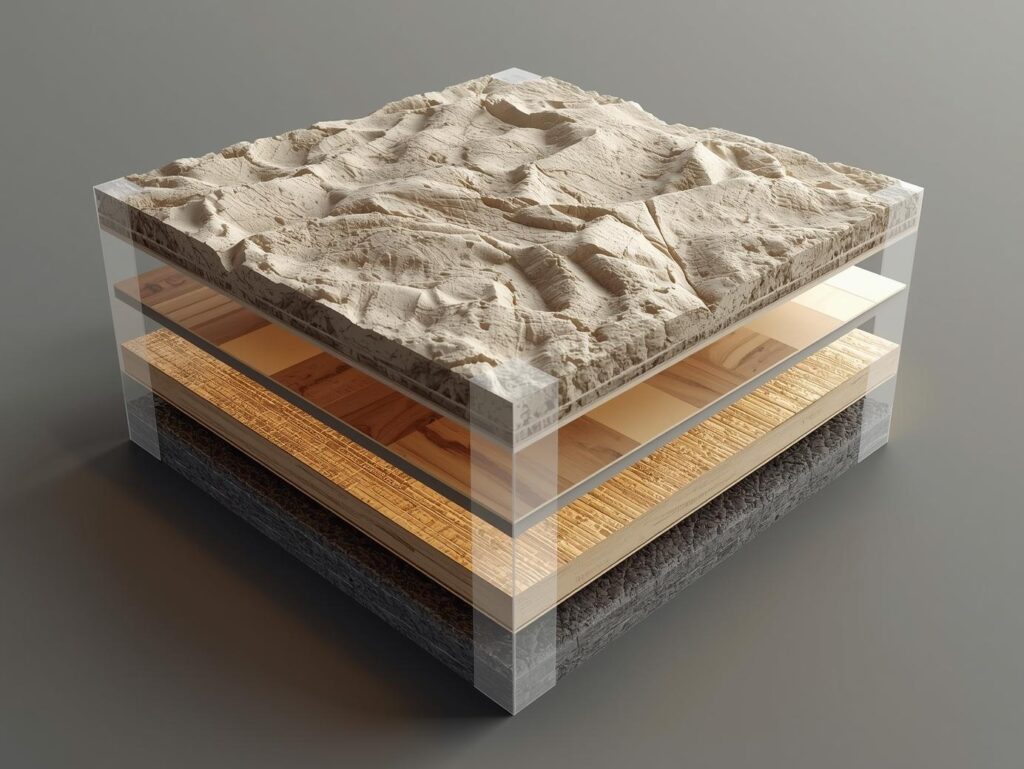
This is where design meets engineering, creating the perfect stack that feels good, lasts long, and looks beautiful.
Here are some real-world pairings you can recreate:
- Budget Combo: OSB + peel-and-stick vinyl → modern look under $2/ft².
- Eco Combo: FSC-certified plywood + bamboo plank → sustainable and warm.
- Quiet Combo: Cork underlayment + luxury vinyl → soundproof comfort for apartments.
- Luxury Combo: Leveled concrete + porcelain tile → timeless and strong.
DIY Rule of 3:
Every good floor has three layers. Base, Barrier, Beauty.
Skip one, and your floor won’t sing.
Step 4—Stop Moisture Before It Starts (DIY Edition)
Moisture is the silent floor killer—and you don’t need fancy lab tests to detect it early.
Try these simple DIY moisture checks:
- The Plastic Sheet Test: Tape a clear plastic sheet to your subfloor. Wait 24 hours. If fog forms, moisture’s sneaking in.
- Use a hygrometer ($15 on Amazon). Measures humidity—anything above 60% means it’s time to dehumidify.
- Seal with Primer: Apply a waterproof primer before installing new flooring—especially on concrete or in basements.
Bonus Hack:
Mix baking soda and lavender essential oil in a jar—it doubles as a natural moisture absorber and keeps rooms fresh.
Step 5—Smooth Moves: Level, Fill, and Flex
Design harmony isn’t just visual—it’s tactile. Uneven subfloors cause creaks, cracks, and flooring gaps.
But here’s the good news: you can fix most issues in a weekend.
DIY leveling checklist:
- Fill gaps with floor patch compound.
- Use a 6-ft level to spot dips—more than 1/8″ needs leveling.
- Apply self-leveling compound for smooth results.
- Sand raised seams for plywood or OSB panels.
Pro Hack:
Don’t skip prep day—it’s the one step that separates “good” floors from “flawless” ones.
Step 6—Design Harmony: Flow, Texture, and Color
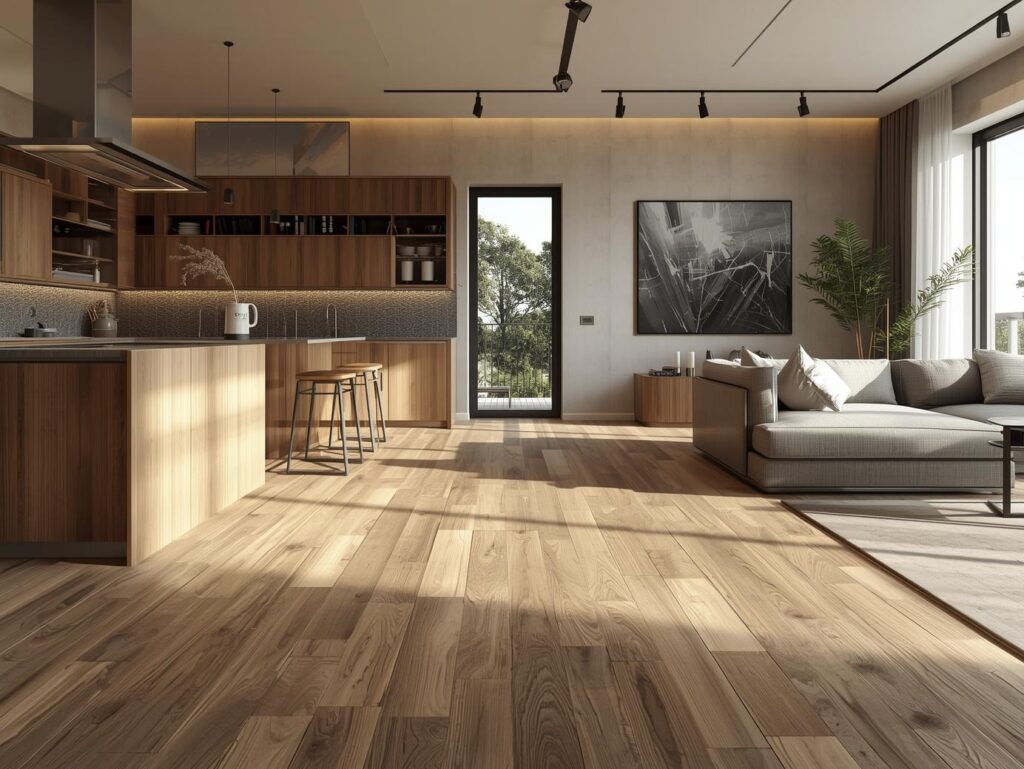
Matching floors and subfloors isn’t just structural—it’s emotional.
You want your home to feel consistent from room to room.
Here’s how to get that designer flow:
- Keep tones complementary: cool concrete with warm oak → instant visual rhythm.
- Use rugs or thresholds to blend transitions.
- Choose finishes with similar sheen (matte or gloss) to maintain balance.
Texture Tip:
Hard floor over firm base = crisp sound. Soft underlay + vinyl = cozy quiet. Match the mood you want to feel.
Step 7 — Weekend DIY Projects for Real Results
Short on time? Start small.
| Project | Skill Level | Cost | Time |
| Fix squeaky subfloor | Beginner | $10 | 1 hr |
| Level low spots | Intermediate | $25 | 2 hrs |
| Add cork underlayment | Beginner | $30 | 1 hr |
| Paint plywood base for rustic finish | Intermediate | $40 | 2 hrs |
DIY Motto:
Don’t wait for the perfect time — start where your feet already are.
Step 8—Show It Off
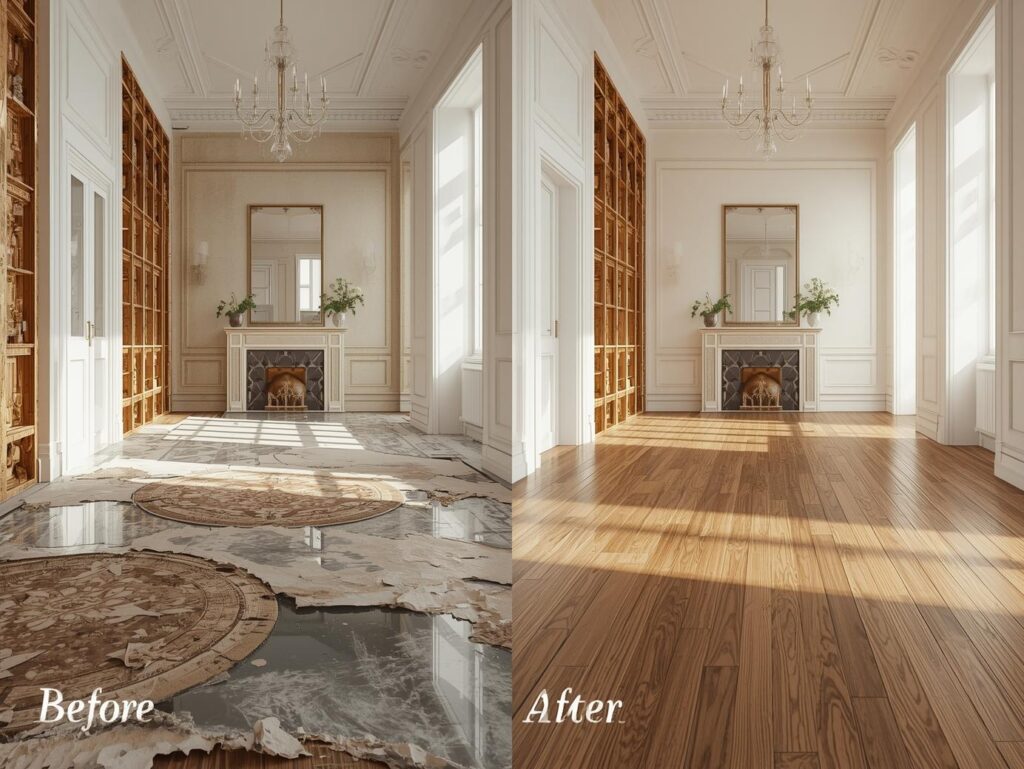
Your floor transformation deserves the spotlight.
Snap before-and-after photos, create a reel, or share moodboard-style progress shots.
- “Flooring Harmony in 3 Steps”
- “Budget Layers That Look Luxe”
- “Designer Floor Combos You Can DIY”
FAQs
Q1: Can I install vinyl over plywood?
Yes—just ensure it’s smooth, sealed, and moisture-free.
Q2: What’s the best subfloor for a basement?
Use raised panels (like DRICore) or sealed concrete with a vapor barrier.
Q3: Do I need underlayment if my subfloor is new?
If your floor type requires cushion or sound control (like LVT or laminate), yes.
Q4: Can I paint my subfloor and leave it exposed?
Absolutely—just use porch paint and polyurethane for durability.
Q5: What’s the cheapest way to fix an uneven subfloor?
Self-leveling compound—a $20 bag can transform a whole room.
Eco Note—Sustainable Pairings That Last Longer
- FSC-certified plywood + bamboo = breathable, renewable pairing.
- Low-VOC adhesive under vinyl reduces indoor toxins.
- Natural cork underlayment improves insulation and feels amazing underfoot.
Small choices add up—and eco floors tend to outlast synthetic ones when properly sealed.
Key Takeaway—Your Floor’s Story Starts Below the Surface
Your flooring isn’t just décor; it’s a daily experience. Every sound, step, and surface feel comes from how well your flooring and subflooring work together.
When you prep, match, and seal them with care, your home feels grounded literally.
So before you lay the next plank, ask yourself: Is the harmony right beneath my feet?
